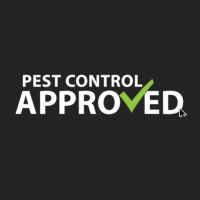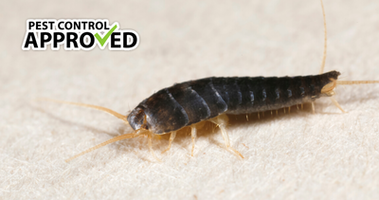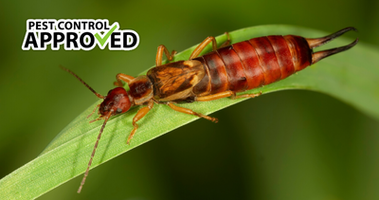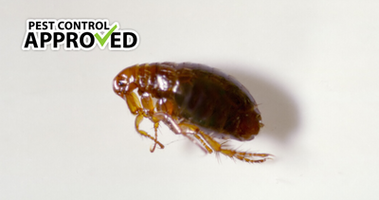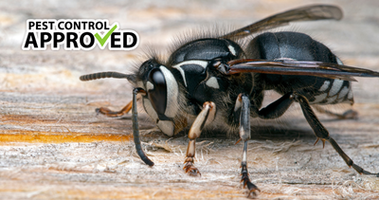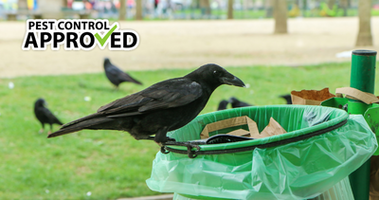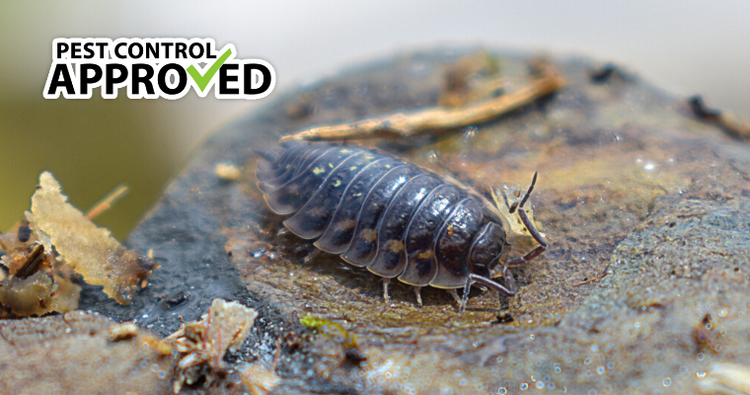
Sow Bugs: A Complete Guide
Sow Bugs also commonly referred to as "Pill Bugs," may look like something straight from the Jurassic period, yet they are a common sight in modern times.
These tubular "bugs" are not bugs at all. Scientifically named Porcellio laevis and Porcellio scaber, these "bugs" are actually land crustaceans. When viewed from above, they have ovular bodies, and their back is made up of durable, overlapping plates. These crustaceans also have seven small pairs of legs and a set of antennae that reach around half of the body's length. Most sow bugs are either a pale or slate gray color and can grow to about 15 millimeters long and 8 millimeters wide.
There are many common names for these animals and can vary according to the region. The most common names for them are pill bugs, sow bugs, potato bugs, roly-polys, and the lesser-known woodlice. Many people simply lump pill bugs and sow bugs together, and to the untrained eye, they do look remarkably similar.
Pill Bugs are slightly different from a sow bug. Pill bugs often have a rounder backside and a deeper body overall. Pill bugs are the bugs that you may have encountered as a kid in your backyard. When they are threatened or disturbed, they roll into a tight ball by tucking their legs into their shell. This mechanism is like that of an armadillo on a smaller scale. Their colors often vary, but in most cases, they are grayish brown. The pill bug will be less than an inch in length when it reaches full maturity.
Since pill bugs are members of the Crustacea class, they are closely related to shrimp, crabs, and lobsters. Typically, crustaceans will live in or next to water. However, sow bugs are dry-land crustaceans, but they do require damp conditions. They have a unique, delicate gill-like organ that allows them to breathe. This organ is located on its underside and must be kept moist in order to function. This is why they are often found in damp and humid environments. They also prefer to live in areas that are sheltered with plenty of decaying leaves or vegetation. They can be found under stones, logs, wood, litter, under plant pots, or piles of bricks.
Sow bugs also have a type of gill that requires constant moisture. That's why sow bugs prefer to live in the moist northwest climates. They are also mostly nocturnal, coming out at night to feast on rotting leaves and vegetable matter. They also prefer to eat the tips of young plants. Because of this habit, they can be considered pests by some; however, they have an essential role in environmental cleanup. They are responsible for eating the leftover and decaying plant matter, which helps to hasten the recycling of plant nutrients back into the soil.
Since they are mostly nocturnal, sow bugs and pill bugs usually leave their natural habitats at night and then crawl about on the foundations of houses, sidewalks, and patios. They will typically invade crawlspaces, underground basements, ground-level entryways, and the first floors of a home.
The most common way for a sow bug to gain entry to a house is through the door threshold. This is especially true for the bases of sliding glass doors, which make a natural entry point for these creatures. They also gain entrance through expansion joints and any cracks in concrete or brick walls.
If these creatures are encountered often, this means that there is large scale breeding happening outside, generally near the foundation of the house. Sow bugs and pill bugs require moisture to survive, so they won't last any more than a few days if the conditions are dry inside.
The Sow Bug Life Cycle
In most cases, a male is needed to reproduce; however, a female can reproduce through a process that is known as parthenogenesis. Parthenogenesis is when a female reproduces through ovum, without the fertilization process. The female will produce eggs that will hatch anywhere from three to nine weeks in time. Once they hatch, the eggs can produce around two dozen offspring.
The young sow bugs will then spend anywhere from three to nine days living in their mother's pouch. The pouch is made up of hardened protective plates on the underside of the mother's body. Females can have around two to three broods every year.
When the young sow bugs leave the pouch, the juveniles will then molt four or five times at different intervals throughout the year. The molting process continues until the sow bugs reach sexual maturity, which can happen within the year. Once the sow bug becomes an adult, their lifespan is typically around two years.
The molting process itself will happen in two different stages. Sow bugs are only capable of shedding half of their skin at any given time. In the first stage, the skin will split open in the middle, and the back half of the shell is shed. After a few days, the sow bug will then discard the other half of its shell. The sow bug and pill bug are quite vulnerable during the molting process and will often be isolated to remain protected until the shedding is complete.
How To Tell If You Have Pill Bugs?
Generally, the symptoms of sow bugs and pill bugs are quite clear but serious. These creatures are mostly herbivores and prefer to feed on fungi and bacteria that are often found on rotting leaves and vegetation. The most severe damage that these creatures will do is to the roots of orchids and other plants. They will eat the fungi and microorganisms found on these root surfaces, which in turn, can damage the plant. When they are eating their meal, they will do inevitable damage to the root tissue as well.
How Did Sow Bugs Enter My Home?
Since sow bugs prefer to live in moist habitats, in most cases, sow bugs and pill bugs will enter the home through ground-level windows or doors. They can also find their way in through garages, or a damp basement if there are any cracks in the walls or the foundation.
Additionally, since these creatures like to feast on mulch, leaves, and young plants, having any of these in the yard will attract them. They will often be found in bushes and gardens around the foundation, feeding on decaying plant matter. Most houses are too dry for sow bugs or pill bugs, so they usually die when they enter the home.
These animals are usually harmless and do very little damage to anything once they get indoors. In most cases, sow bugs are simply an inconvenience for some homeowners. They will not bite or sting and do not carry disease. However, if you spot a sow bug, that generally indicates that a large population exists in that area.
How To Eliminate Sow Bugs?
The most effective way to prevent or eliminate sow bugs is to take away their hiding places. If there are moist hiding places in the house, they will not be attracted to the indoors. There are several precautions homeowners can take to keep sow bugs from entering the home.
1) Clean Up The Yard
If there is firewood on the ground or around the yard, be sure to keep it far away from the house. Relocate any logs, wood, boards, or rocks that sow bugs can hide under. Also, be sure to dispose of any dead leaves and grass clippings that may be around. Lastly, investigate any gutters or downspouts to ensure that they are draining away from the house's foundation.
2) Construct A Barrier
Sow bugs can be a nuisance, but they are not unstoppable. Homeowners should remove any mulch in flower beds next to the foundation of the house to take away their entry point. The house should have a zone all the way around that is free of both leaves and mulch. The zone should be anywhere from 15 to 30 cm in width and cover the perimeter of the house. This will eliminate any areas for sow bugs to live and nest. Homeowners should also consider trimming any bushes or shrubs if they allow for a shady environment around the foundation.
3) Repair Cracks And Holes
If there are any small holes or cracks anywhere around the house, sow bugs can find their way in. Be sure that there is a tight seal on any exterior doors. It might be a good idea to replace or install weather stripping and make sure the door sweeps fit tightly. Crawlspace entrances should also be examined to ensure that there are no gaps or holes. Also, the crawlspace should have adequate ventilation to prevent excess moisture from gathering. For those who live in brick homes, it is possible to insert a square of plastic screening to weep and holes and prevent sow bugs from gaining entry.
4) Minimize Moisture
The best way to avoid sow bugs is to eliminate humidity in the environment. Proper waterproofing should remove any moisture that seeps into basement walls. Consider hiring a specialist to check for proper waterproofing. Also, buying a dehumidifier is a great way to keep basements dry and free from excess moisture.
Pesticides And Other Control Methods
It may be necessary to use a control method to eliminate the pests if there is a severe infestation of sow bugs or pill bugs. Many gardeners tend to use the pesticides Malathion, Diazinon, or Sevin to control these creatures. For best results, spray around the inner and outer perimeter of the area that requires control. If it is a greenhouse or a garden, make sure to spray all the way around, not leaving any gaps.
In most cases, pesticides will be useful in controlling the presence of sow bugs or pill bugs. However, these pesticides are unlikely to eliminate them completely. Combining pesticides with environmental controls is the most effective way to eliminate or control a population.
Typically, the application of these pesticides on the baseboards of a home or interior space will do little to stop or eliminate these creatures. Sow bugs and pill bugs that enter the house and will generally die if the house is dry. In this case, just dispose of the dead animals with a broom or vacuum. There is usually no need to employ harsh chemicals in the home.
If there is a large infestation outside and pesticides are the only option, they can be useful to stop their breeding and migration. Apply these pesticides to the bottom of exterior doors and doorways, around the entrance to the crawlspace, around foundation vent ports, underneath any exterior siding, and any utility openings located around the house.
It can also be quite useful to spray the ground area that is beside the foundation. Be sure to cover any mulch beds, or plantings, as well as a few feet up the base of the foundation walls. As mentioned previously, any large piles of mulch or leaves should be raked. This will expose any of the sow bugs to allow for more natural treatment. Lastly, insecticide treatment may be useful around the foundation walls in crawl spaces and any unfinished basements.
If there is only a small number of pill bugs to control, try using a more natural approach. In this case, sow bugs and pill bugs can be trapped using a half of a cantaloupe rind. Also, a hollowed-out potato that is placed upside down near where the bugs have been seen, is an effective natural trap.
There are also several other environmentally friendly approaches to dealing with these creatures. Some useful methods of control are using Neem oil on plants or sprinkling a generous amount of diatomaceous earth around the base of any plants. This will create a barrier that is difficult for these creatures to overcome.
Gardeners will also decant the areas of affected plants by washing their roots with a very mild detergent before replanting the plant. They will also soak the plant in a bucket of water overnight and immerse the pot and potting medium. These natural methods have yielded mixed results, but they should be tried before employing any heavy chemicals or pesticides.

